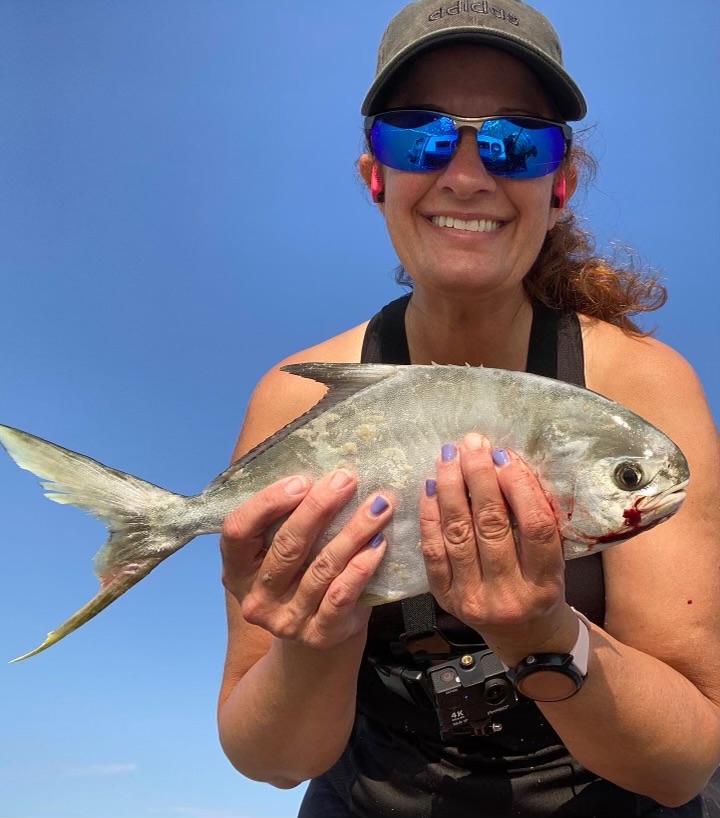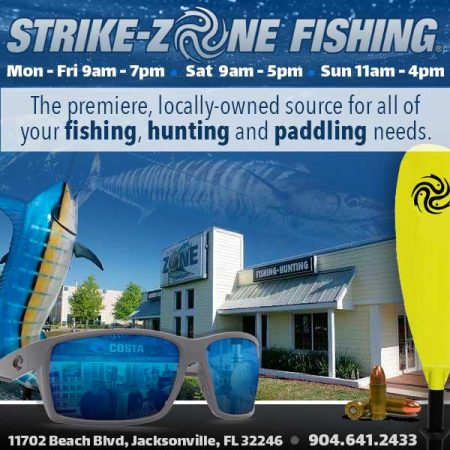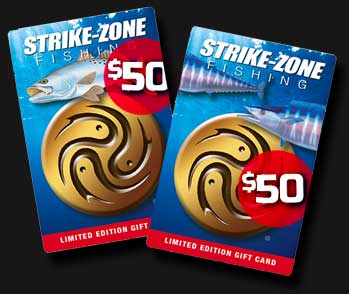Tagged: featured
- This topic is empty.
content-single-topic.php
-
AuthorPosts
-
-
loop-single-reply.php
September 6, 2022 at 3:07 pmThe beaches have emptied out a bit now that the school year is back in full swing here in Florida, which is great news for us surf anglers! This summer has been hot and humid, and the fishing slowed to nearly a crawl unless you know a few secret spots where fish congregate in deeper waters within reach of the shoreline.
Mullet are just now starting to come out of the rivers, not in droves yet—but that will be coming soon. And then it’s game on! Our favorite season for surf-fishing is right around the corner, and thoughts of fall fishing bring excitement to many a surf angler, with September marking the beginning of the opportunities that await.
Weather and Water Temps
Water temperatures have hovered between 83-86 degrees in August, and though we most likely won’t see a significant drop in water temperatures soon, we should be looking at an average of 83 degrees by the end of September. Why is that so important? I’m glad you asked! You see, fish cannot control their own body temperature, so they have to go where they are most comfortable. A lot of the fish we love to catch here, like pompano, don’t like our warm water so they have migrated north and are still in the Carolinas. It’s a good idea to pay attention to their water temperatures, too; and once theirs begin to drop in the 70s, we can know that the pompano will start heading back in our direction.
Chip Brundage, The Sinker Guy, reminds us that pompano will be starting their migration south and will hit each beach at different times. Some may jump over beaches and bypass them completely while others will stay schooled up, so each beach may have drastically different results, from Fernandina Beach all the way down to Flagler Beach.
Speaking of water temperature and weather, let’s keep in mind that statistically, September is the most likely month for a hurricane to make landfall in Florida. The last few years, most of the storms have headed toward the Gulf or skirted on the outside of the country, but that doesn’t mean future storms will bypass Northeast Florida. If a storm comes our way, it can greatly affect our fishing as it rapidly changes the salinity and oxygen levels of the water, not to mention the changes in wind and pressure that may cause fish to seek better conditions. So pay attention to the forecasts as we dive headlong into hurricane season.
In the meantime, as long as we can get some good east winds to keep the water clean, there should be some great fishing. Typically September gives us access to redfish, seatrout, resident pompano, black drum, flounder, whiting, and many other desirable species. So knowing how to target those species will be crucial to your success.
Bait
Where I live just south of St. Augustine, sand fleas have been harder to find this year, and this seems to be the case across most of the region. There could be many reasons for this, but it seems to be hit or miss; one day you can find large colonies, while other days you’re lucky to find a few big enough to hook. Because of the lack of natural bait, I started salting my leftover shrimp and lately have done well using salted shrimp paired with fishbites. It takes a bit of research to figure out what flavor of fishbites are working on a given day, but once I do, I find a higher success rate once I switch to the flavor the fish are biting on.
As the days in September tick off, we should see more and more mullet running the beach. By the end of September last year, some days the mullet were so thick that I was catching them with my sand flea rake! Courtney Woznek with Life4Reel Fishing Adventures in Jacksonville says, “With tons of bait in the surf comes bigger predator fish. Expect to see tarpon, redfish, black drum, whiting, and big sharks. Most of these fish are cruising close to the beach and a great place to set up is right outside of an inlet or pass.” Courtney suggests using mullet, crab knuckles, and fishbites when targeting these predator fish.
September Strategy
My recommendation is when it’s still hot and fishing is slow, make sure you are getting your rigs ready, whether you tie your own or buy them, and stock up on Sputniks and other terminal tackle so you have them ready for when the fall fishing frenzy begins! If you can find sand fleas, bring them home to blanch and freeze. I like to have my fishbites cut down to fingernail size ahead of time.
Make sure you are connected with a local fishing group. A great one for surf fishing in Jacksonville is BrokenReel23 Northeast Florida Surf Fishing on Facebook. I have learned a ton from the group and especially from Spencer Brogden, the group’s founder, and Chip Brundage, the group’s expert.
When you do have time to go surf fishing, my first suggestion would be to check the forecast on an app like Magic Seaweed, which is actually designed for surfers. Most fishing apps don’t have pinpointed locations on the beach like Magic Seaweed does. It’s great for getting very accurate tide and water temperatures, as well as other helpful information such as wind direction and speed, and can help you determine the best beach for the tide that will be present when you will be fishing.
When you arrive at the beach, don’t just set up anywhere. You may have heard it a thousand times, but 90% of the fish are in 10% of the water—and this is true on the beach too. Learn how to read the beach if you don’t know how, and set up near a runout (not directly in front of it). Cast rods into different zones to find the fish, and once you start getting hit, move all your lines to that depth or distance.
And most of all—have fun! It’s the beach! Tight lines!
Cathy Sanders is the founder of Fishin' Girl, LLC and is dedicated to gathering women who love fishing and want to enjoy it together. Call to book a trip, or visit Fishin' Girl on the web.
To respond to this post, login or register here.
AuthorPostsViewing 0 reply threads
-



